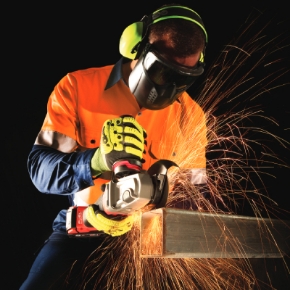Gauge your safety and performance! Understanding glove gauges is important for protecting your hands in the workplace. Gloves with specific gauges offer advantages and protection for certain tasks. For example, thinner gloves are perfect for electricians handling thin cables.
Deciding on the appropriate safety glove can be daunting due to the many available alternatives. The work environment and potential dangers should guide your choice. But first, what is gauge?
Gauge refers to the number of stitches per inch in the glove's material.
- Lower gauge = Thicker yarn, loose stitching
- Higher gauge = Thinner yarn, tight stitching
Understanding Glove Gauge
A glove with a lower gauge is typically thicker, heavier, and more durable. The thick yarn used to make these gloves provides high protection but can somewhat hinder dexterity. These gloves are mostly for heavy duty applications. Gloves with a higher gauge have a thinner and lighter yarn, allowing for greater dexterity and flexibility. Providing a more comfortable, barehand feeling which is effective when handling small tools or performing delicate tasks requiring precision.
The Graphex range has various gloves for multiple applications. Choosing one glove may not cover all applications. Choosing the right one will make a difference in your performance.
With the new Graphex Series of hand protection you can now have safe alternatives and still maintain comfort and dexterity in your hand protection.
To view the full range, Click Here
Personal Protective Equipment (PPE) Checklist Form:
To streamline the PPE selection process, using a checklist form can be highly effective. This form helps assess the required PPE based on the identified hazards and ensures that all necessary equipment is provided to workers.
Download FREE Personal Protective Equipment (PPE) Checklist Form


















































































